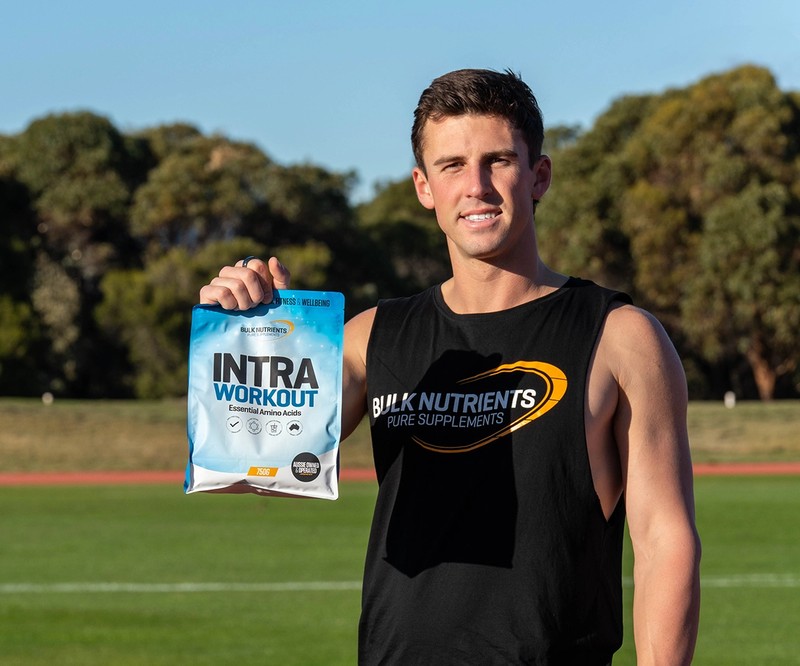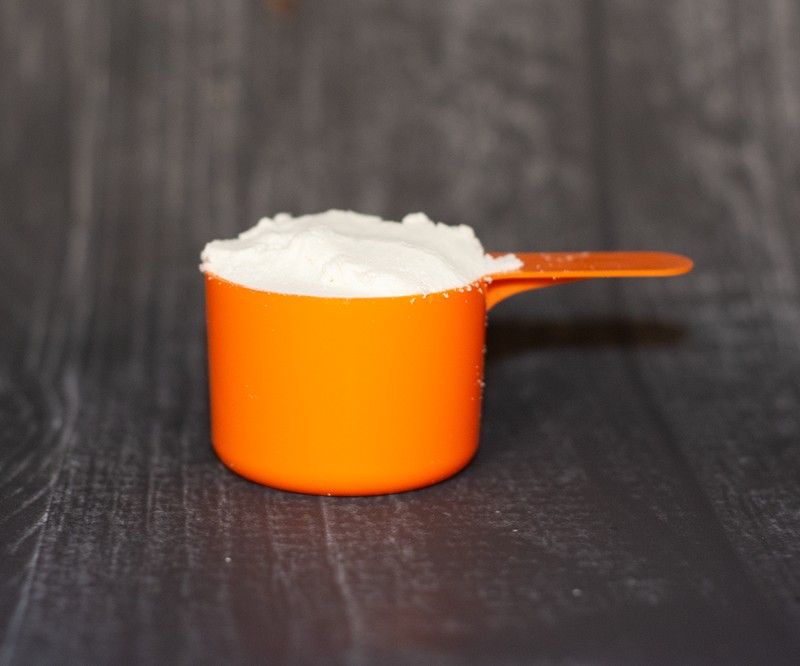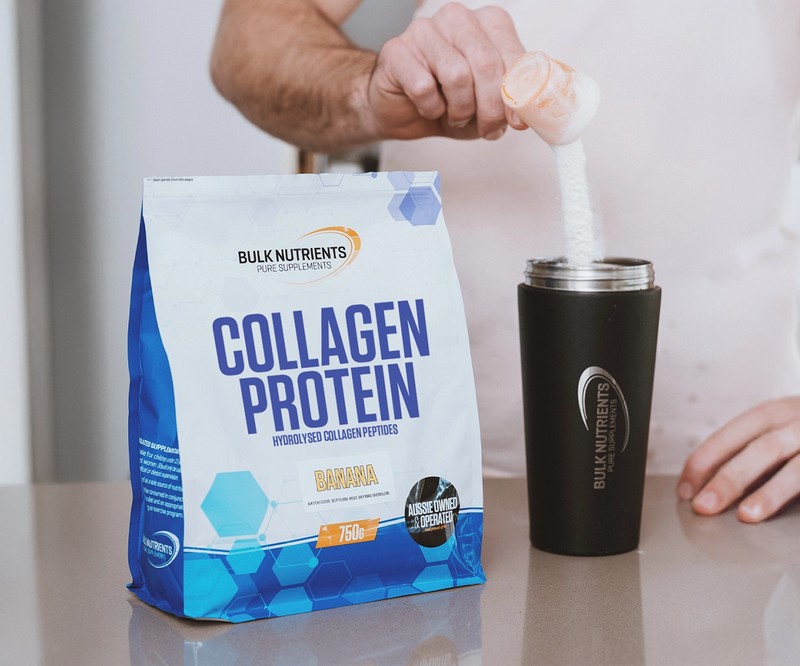Programming Thor's Four

Measurable training
Before we get into the nitty-gritty, just a few words on being measurable. Too often I see unstructured and untracked programs and training sessions. I hear about someone with the basic idea of throwing together some set and rep ranges at random, is hoping that “mixing things up” will “shock the muscles” into strength gains and muscle growth.
Sure, you may be able to get some decent “gains” through approaching your training this way – at least maybe in the short term or as a novice lifter. But what happens when you return week after week, month after month, doing those same unguided workouts where you pick and choose the rep ranges, sets and overall volume at random? I can tell you what WON’T happen – and that is you won’t be able to accurately assess whether you are increasing in strength. And we know that strength increase is a good indicator that you’re also increasing muscle (particularly when in a calorie surplus).
So with this program, you will need to be precise with your workout-tracking, noting down weights, sets and reps with every workout. Get into the habit of having a pen and paper/notebook handy. There are also several iOS and Android phone apps that have the ability to track your workouts, including my very own “Thor of Oz” app which is now available for my clients.
Progression Scheme and Programming
This is a broad overview of the Progression Scheme and will give you the tools to program your own Thor’s Four workouts. By “Progression Scheme” I simply mean using a system to add weights and progress with your lifts over time.
Frequency
Using the Progression Scheme, this program can be used for those who can weight train 2 – 3 times per week, ideally with even rest days in between. However, progress can occur with as little as one session every 5-7 days. If you can train less frequently than every 7 days, you will likely find it difficult to make any notable progress. This level of frequency is not likely to provide enough overload or volume on the muscle, and the time between sessions is likely too great for any muscle adaptation to occur.
This progression scheme will focus on developing the strength and size of your largest muscle muscles. You may also program and allow for “accessory work” on the same training days (or on other “rest” days) where you may wish to perform some extra exercises for the development of supporting or smaller muscle groups such as bicep curls, triceps extensions, calf raises etc.
Any accessory work performed and the success of their effectiveness will largely depend on your specific goals and ability to accommodate that additional workload (through appropriate rest, calorie intake etc.) and is therefore recommended that you take into deeper consideration or find a suitable coach to assist with this.
Example of Training Frequency
DAY EXAMPLE 1* (less frequent) EXAMPLE 2* (more frequent) EXAMPLE 3** (frequent) EXAMPLE 4** (with accessory work) *less effective **ideally effective.
| DAY | EXAMPLE 1* (less frequent) | EXAMPLE 2* (more frequent) | EXAMPLE 3** (frequent) | EXAMPLE 4** (with accessory work) |
|---|---|---|---|---|
| Monday | Thor’s Four | |||
| Tuesday | Thor’s Four | Thor’s Four + calves | ||
| Wednesday | Thor’s Four | Thor’s Four | ||
| Thursday | Thor’s Four + triceps | |||
| Friday | Thor’s Four | |||
| Saturday | Thor’s Four | Thor’s Four + biceps | ||
| Sunday |
The suggested training days aren’t set in stone and can be flexible. Some weeks you simply may not be able to train on a certain day, therefore it can be easily moved to the day before/after. However, try to have at least 48 hours of rest in between sessions.
Once you have selected a frequency in which you can train (I recommend 3 days per week as optimal, depending on some factors), it’s time to take a look at the level of volume each workout will encompass.

Workout Volume – Reps
As we are focusing on large, compound movements, we want to work in a rep range that’s relatively low to moderate. It is well documented and studied through validated research, which indicates that rep ranges between 4 – 8 are likely to provide us with the most effective progress for both strength and muscle development.
4 -8 reps are too large of a range, therefore I have broken them down to two ranges:
- 4 – 6 reps
- 6 – 8 reps
Obviously, the lower rep range of 4 – 6 will enable you to use more weight, hence if your priority goal is strength development, this may be slightly more advantageous. The 6 – 8 rep range, however, may allow you to “feel the muscle working” a little more, and will also yield greater volume as you will be performing additional reps over the course of a workout. You may also feel a little “safer” working with less weight in the 6 – 8 range. Simply select your preferred rep range, either 4 – 6 or 6 – 8 and stick with that.
Workout Volume – Sets
You will be working at quite a high-intensity level each set, however not too high so that you burn out. It is going to take a fair amount of exertion to move weights at a relatively low number of reps and consequently, this will have an effect on your nervous system, and your ability to recover. Therefore, because we are working at such high intensity, we want to limit both the number of sets in total and the number of sets that are taken to failure.
Four sets per exercise is a good number and allow for adequate progress while avoiding too much overload (potential overtraining). Any further volume through sets (or frequency) may be unnecessary and start to diminish returns.
Each set, you will avoid taking to failure. Our fourth set for each exercise is our exception, where reps may be taken beyond the range and even to failure if and where able.
Rest Periods
Rest will also play a big part in this example program. At the rep ranges recommended, we will be using predominantly our ATP-PC system consists of adenosine triphosphate (ATP) and phosphocreatine (PC). Therefore, it is recommended to use a minimum of 120 seconds between sets, to enable adequate recovery, perhaps slightly more where/when required.
Starting the Program
With our selected rep range (let’s use 6 – 8 in this example), each workout will focus on using either 8, 7 or 6 reps for every set. You will start with your very first workout (Cycle 1), performing the highest amount of reps of our selected rep range – which in this example would be 8 reps on each set. To help you visualise this, let’s look at a recent example of my program where I performed Thor’s Four on Monday of my first week of this program:
| Cycle 1 | Set 1 (# reps/weight in KG) | Set 2 | Set 3 | Set 4 |
|---|---|---|---|---|
| Barbell Squat | 8 X 94 | 8 X 94 | 8 X 94 | 10 X 94 |
| Deadlift | 8 X 115 | 8 X 115 | 8 X 115 | 8 X 115 |
| Bench Press | 8 X 75 | 8 X 75 | 8 X 75 | 9 X 75 |
| Chin-Up (assisted) | 8 X 30 | 8 X 30 | 8 X 30 | 8 X 30 |
Note how each set was taken to a total of 8 reps, even where I felt like I could have likely performed more reps in sets 1 – 3. With the exception of the 4th sets on squats and bench press, where I performed 10 and 9 reps respectively, while still avoiding true failure (where you attempt to perform another rep but fail).
I would not expect to see many more than 1 – 2 additional reps performed on this fourth set. Any more and it is possible that the weight you have selected to start the program with is too light, and that you may need to increase it more than the recommended increment of 1Kg – 5KG and reassess from there. On the contrary, if you find that you cannot complete the required 8 reps for each set, and you fall well short on your fourth (say 6 reps) and fail on your 7th, this indicates that you have selected too heavy a weight, to begin with, and may need to reduce that weight 1KG – 5KG. Simply reduce the weight and re-assess on your next session.
Progressing
The weights you will lift with each exercise will go up with every workout, however, there is a specific way in which we must add weight. We will aim to progressively “overload” the muscle, but if we try to add too much weight too quickly, we simply won’t be strong enough to adapt to such a large overload. While early on in the program you may find you are adding 2.5kg, 5kg or even slightly more on each lift, each session, progress will likely slow down the further you move into the program. It is not a question of if, but when… there will come a time where you must likely increase your weights with the smallest increment possible, even as low as 0.5KG.
Micro Weights
For barbells (used on the squat, deadlift, bench press), it is recommended we use micro weights which will enable the most effective progression. Micro weight plates as light as 0.25kg, 0.5kg and 0.75kg will enable increases of 0.5kg, 1kg and 1.5kg respectively (2 X micro weights on either end of the barbell creating an equally distributed load). Micro weights can also be used for the chin-ups, should you be doing them on a machine (assisted), with a weighted belt/chain attached to your body, or a weight vest.

First Progression
We have already taken a look at the first workout, which can be used as your “baseline” workout.
Finding out an appropriate weight/load to start at for each exercise is “baselining”. If you need to repeat this first workout to find the appropriate weight in which you should use to start, do that first. Once you are happy with your starting weights for all exercises you can progress.
Now let’s look at the example of my second workout, Cycle 2, which was completed on Wednesday:
| Cycle 2 | Set 1 (# reps/weight in KG) | Set 2 | Set 3 | Set 4 |
|---|---|---|---|---|
| Barbell Squat | 7 X 95 | 7 X 95 | 7 X 95 | 8 X 95 |
| Deadlift | 7 X 116 | 7 X 116 | 7 X 116 | 7 X 116 |
| Bench Press | 7 X 76 | 7 X 76 | 7 X 76 | 7 X 76 |
| Chin-Up (assisted) | 7 X 29 | 7 X 29 | 7 X 29 | 7 X 29 |
Note how the reps decreased (from 8 down to 7) yet the weight increased, but only slightly by 1KG on all lifts. Although it looks like I have decreased in weight for the chin-up, I have actually progressed as it is an assisted exercise, therefore the less weight was assisting me which made the exercise more difficult. You will also note how every set was taken to a total of 7 reps, except for the barbell squat which I squeezed out for an 8th rep with proper form.
Second Progression
The second progression will see us increase the weight again and lower the reps once more to 6 which is on the lower end of the rep range (6 – 8). Here is Cycle 3 which was done on Friday:
| Cycle 3 | Set 1 (# reps/weight in KG) | Set 2 | Set 3 | Set 4 |
|---|---|---|---|---|
| Barbell Squat | 6 X 96 | 6 X 96 | 6 X 96 | 6 X 96 |
| Deadlift | 6 X 117 | 6 X 117 | 6 X 117 | 6 X 117 |
| Bench Press | 6 X 77 | 6 X 77 | 6 X 77 | 6 X 77 |
| Chin-Up (assisted) | 6 X 28 | 6 X 28 | 6 X 28 | 6 X 28 |
In this session, I managed to hit 6 reps on every set. I felt like if I was to attempt the 7th rep on any of the exercises (on the 4th set), I was going to fail. It’s not so much about “no guts no glory” or believing in your abilities, but safely assessing your ability and the risk VS the reward. Had I the luxury of a spotter or someone to pull the weight off me should I needed that assistance, chances are I may have attempted the 7th rep on some of the exercises. You should always train safely, especially when lifting heavy weights.

Deload
“Deload” is an important part of the Progression Scheme. A deload is typically performed every 4th session. The purpose is to give the body a rest and back off on the volume and intensity only slightly so that we can continue to progress and not burn out or overstress the body.
In our above examples, Cycle 1 was performed with 8 reps, Cycle 2 with 7 reps and Cycle 3 with 6 reps. Thus making Cycle 4 the Deload. To program an effective deload cycle, as mentioned, we will be reducing the total volume of the session by both load (weight) and sets/reps.
Reducing load
Simply use your math skills to reduce the amount of weight you were using on each exercise of your previous session by 10 – 15%. For example, during my last barbell squat session, I had a 96KG total. Now multiplying that by .09 (90%) gives us 86.4, rounded to 86KG. I could also use 96 X .85 (85%) = 81.6 rounded to 82KG. So for my barbell squat deload session, anywhere between 82 – 86KG is fine.
Reducing sets/reps
On the deload cycle, I will be performing one less set, 3 instead of 4, but still performing 8 reps for each set and ALWAYS avoiding failure, however maintaining high intensity. This deload session was performed the following week on Monday:
| Cycle 4 (Deload) | Set 1 (# reps/weight in KG) | Set 2 | Set 3 | Set 4 |
|---|---|---|---|---|
| Barbell Squat | 8 X 85 | 8 X 85 | 8 X 85 | - |
| Deadlift | 8 X 103 | 8 X 103 | 8 X 103 | - |
| Bench Press | 8 X 68 | 8 X 68 | 8 X 68 | - |
| Chin-Up (assisted) | 8 X 33 | 8 X 33 | 8 X 33 | - |
You may feel that you can push harder, lift more weight, do more reps and complete more sets on this deload cycle, however, I would discourage this and actually force yourself to back off. This is also a great opportunity to get your form, execution and ego in check. It’s not always best to lift the heaviest weight possible and put in 100% effort every single training session. As I mentioned previously, this raises the chances of overtraining.
Ongoing Progression
So now that we have completed a total of 4 cycles, we simply start again from the 5th cycle, using 8 reps for 4 sets, increasing the weight by the smallest increment once again. On the 1st cycle for Barbell Squats, I performed 8 reps with 94KG. Cycle number 5 will see me aiming for 8 reps with 95KG – which is a 1KG increase from the previous week. Here is an extended table with examples for the barbell squat over multiple weeks to give you a great visualisation of how it might look with your own progression scheme program over time. For simplicity, I have removed examples of the other exercises:
| Barbell Squat | Set 1 | Set 2 | Set 3 | Set 4 |
|---|---|---|---|---|
| Cycle 1 | 8 X 94 | 8 X 94 | 8 X 94 | 8 X 94 |
| Cycle 2 | 7 X 95 | 7 X 95 | 7 X 95 | 8 X 95 |
| Cycle 3 | 6 X 96 | 6 X 96 | 6 X 96 | 6 X 96 |
| Cycle 4 (deload) | 8 X 85 | 8 X 85 | 8 X 85 | - |
| Cycle 5 | 8 X 95 | 8 X 95 | 8 X 95 | 9 X 95 |
| Cycle 6 | 7 X 96 | 7 X 96 | 7 X 96 | 7 X 96 |
| Cycle 7 | 6 X 97 | 6 X 97 | 6 X 97 | 6 X 97 |
| Cycle 8 (deload) | 8 X 86 | 8 X 86 | 8 X 86 | - |
| Cycle 9 | 8 X 96 | 8 X 96 | 8 X 96 | 8 X 96 |
Taking the barbell squat as our example, a 1KG weight increase over one week may seem like a small amount, however, let’s consider that over the course of 3 months, we could potentially see up to an increase of 12 – 15KG! Not bad. And that’s assuming we are progressing by one of the smallest increments each training session.
The overall strength gain over 3 months could potentially be more. Of course, this applies to our other lifts too, and will also translate to muscle gain, as we will now require more muscle to be actively engaged to lift the higher amount of weight. You can continue this program for 3 – 6 months, or even longer, before re-assessing or swapping up for a program that is more strength or hypertrophy focused, depending on your specific goals.
Variables
However, something to keep in mind is all the variables that may affect your ability to gain strength, muscle and perform at a high level in the gym. This does not consider factors such as lifestyle, calorie intake, nutrition, rest, injuries, technical ability, other activity/exercise in which you may engage, and/or secondary goals such as weight/fat loss or development of specific muscles such as arms, delts or calves.
This is why it is highly recommended that you engage a suitability qualified and experienced coach who will help you design an effective program, track and assess your progress and give overall direction.
There you go, you now have the tools and basic knowledge to program your own Thor’s Four! For more in-depth, specific coaching to help you achieve your Strength and Muscle development goals, please contact Thor of Ozfor a free consultation with Andrew.

Otherwise known as "Thor of OZ" due to his uncanny likeness to a certain superhero, and GIQUE Fitness Coach, Andy holds a Master Trainer Certificate IV in Fitness, specialising in coaching. A Bulk Ambassador since the beginning, Andy is focused on helping his friends in the cosplay community achieve their full potential and lead a healthy, balanced lifestyle.
More about Andy Leigh














































